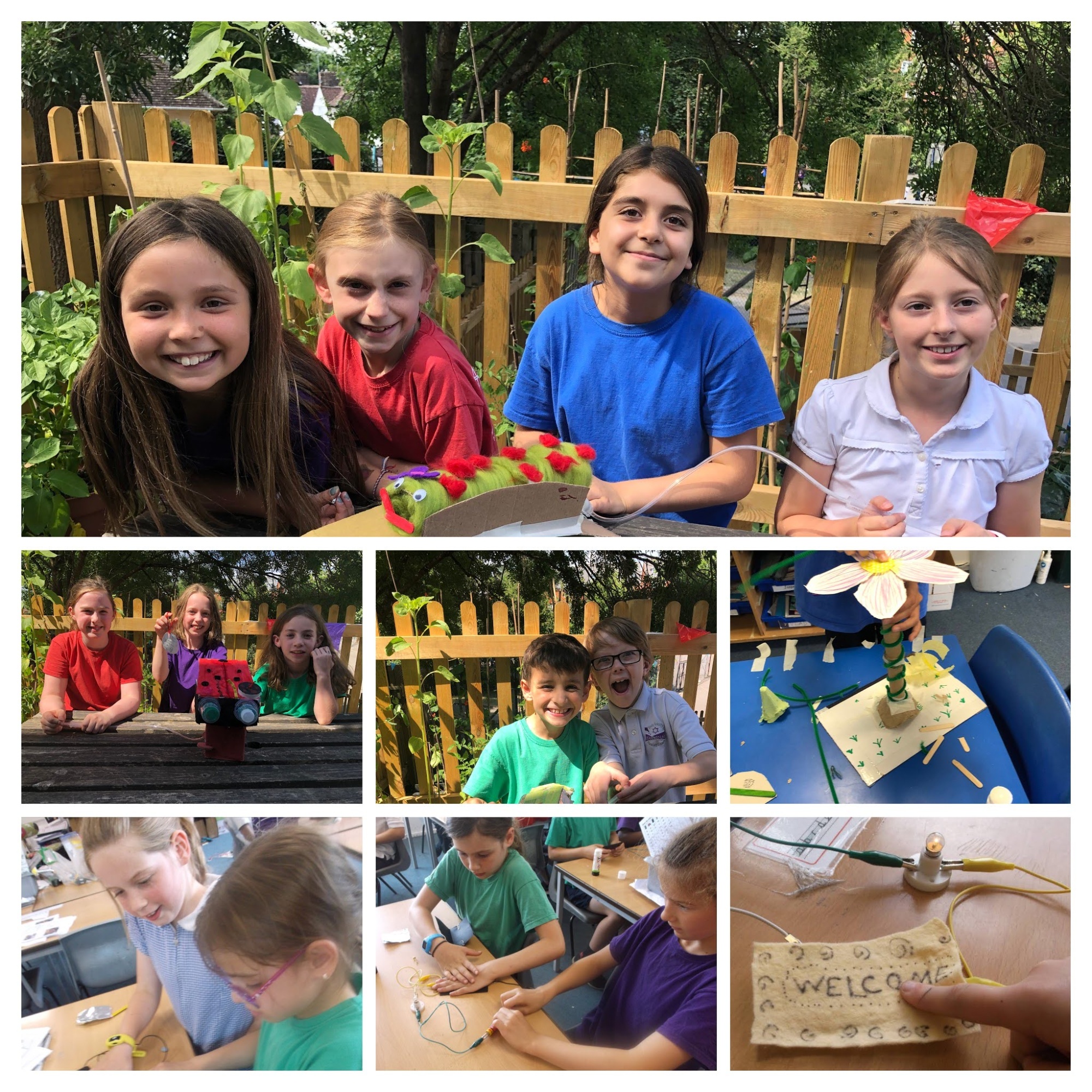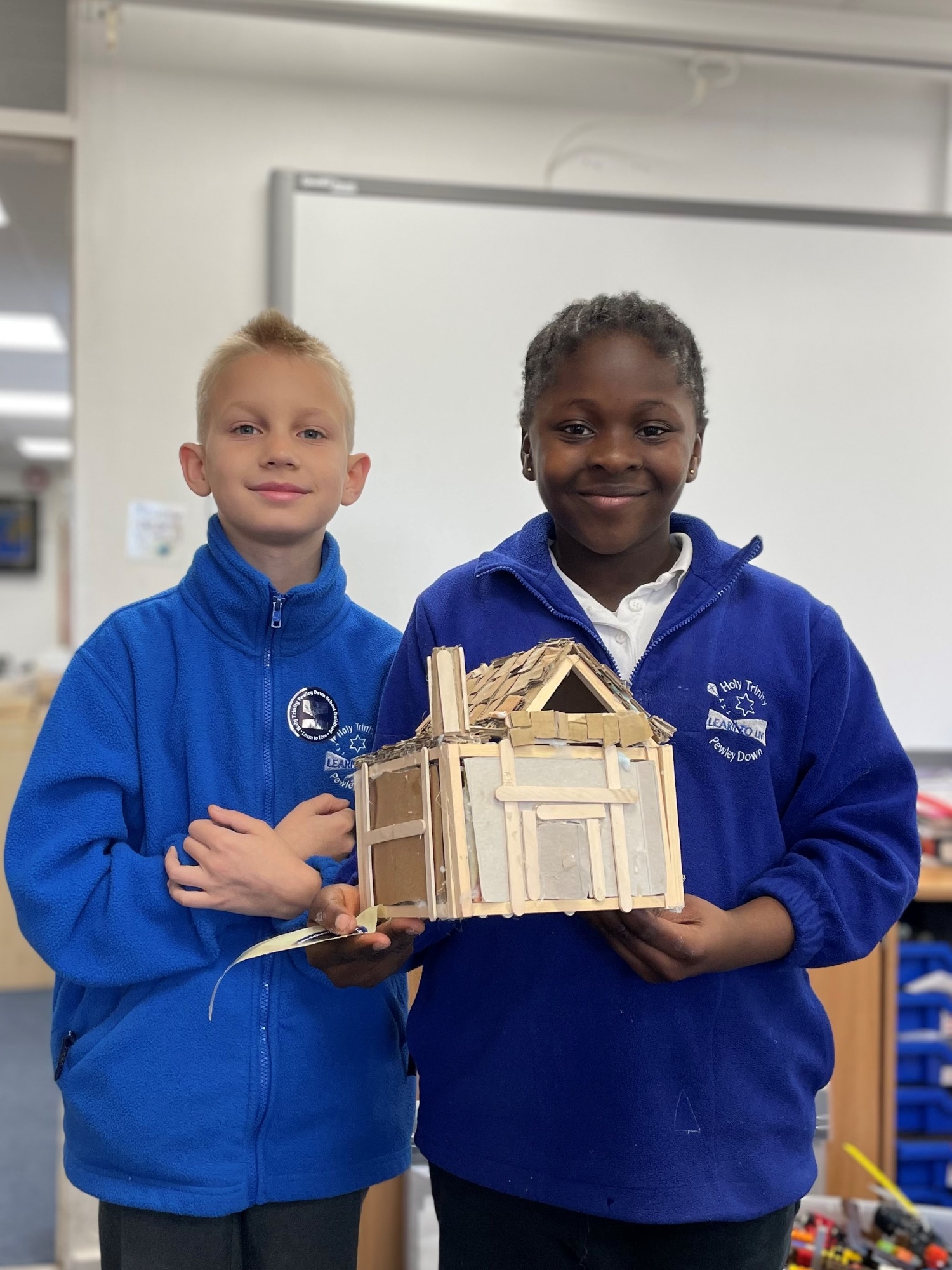Design Technology
Intent - The vision
At Holy Trinity Pewley Down, children are encouraged to ‘Learn to Live’ and our Design and Technology curriculum (DT) is centred around this approach. As stated in the National Curriculum, Design and Technology is ‘an inspiring, rigorous and practical subject’. We aim to provide our students with opportunities to use their imagination and be creative when designing and making products that solve real and relevant problems. We enable children to work within a variety of contexts, considering their own and others’ needs, wants and values. We create an environment in which children are encouraged to problem-solve and safely take risks, becoming resourceful and innovative in their approach whilst strengthening essential skills in the designing, making and evaluating of effective and efficient products.
As part of our DT provision, we ensure that children are well-equipped with useful technical knowledge and vocabulary, essential in supporting them when designing and making products. Children will learn how to build and strengthen structures made from a variety of materials; to use moving mechanisms or electrical systems in their designs and explore different ways of selecting and joining materials when creating products. At HTPD, the teaching of a creative DT curriculum enables all children to gain ‘real-life’ experiences and encourages a ‘Zest for Learning and a Love of Life’.
Implementation - How we achieve our goal
To ensure high standards of teaching and learning in DT, we implement a curriculum that is progressive throughout the whole school, allowing children to revisit and build upon their previous learning and skills. Where possible, DT is planned and taught as part of our half termly topics, therefore, making real-life links to inspiring contexts. We use the DT Association’s ‘Projects on a Page’ as the spine for our curriculum and adapt areas of the teaching and learning guidance where appropriate. The carefully mapped progression of skills (and coverage checker) ensures all learning objectives are covered.
During a DT lesson, a variety of teaching approaches are used, based on the needs and interests of the children. This all begins in EYFS, where topics are chosen by the children each year, allowing them to direct their own learning and explore the use of a variety of building materials and fixings when creating products. By the end of Year 2, children will have developed skills in needlework, when creating cushions and felt toy dinosaurs; gained valuable wood working skills building moving toy cars and bug hotels and practised preparing fruit and vegetables when creating a healthy snack. These key DT skills are continually built upon throughout the KS2 curriculum, where children design a Greek-inspired snack in Year 3; create a mini beast with moving parts in Year 4; celebrate the seasonality of fruit and vegetables in Year 5 and take part in their choice of project based on a Victorian ‘Apprenticeship’ with ‘The Guild of Master Crafts People’ in Year 6. DT projects at HTPD use the design, make and evaluate approach. A design booklet is used to guide the children’s learning where appropriate. They form and adapt ideas, draft and edit designs and, once the product has been made, they are given time to evaluate their product and reflect on what they might do differently next time.
Using a variety of creative and practical activities, we teach the knowledge and skills needed for children to engage in an iterative process of designing and making. Children’s planning, evaluative work and finished products are celebrated in our DT Project Booklets, Topic Books and it is also showcased on our website, Twitter and displays around the school.
Impact - How do we know our vision has come to fruition?
Upon completion of Year 2, children will have the foundations for the learning ahead, having become well-familiarised with the design, make and evaluate process, which is central to the DT curriculum. In addition, because of the wide range of skills practised in the projects planned across Year R, 1 and 2, they will move into KS2 with key knowledge crucial to their future learning.
By the time children leave HTPD at the end of Year 6, they will have cultivated an excellent attitude towards creating, both independently and as part of a group. They will have learned to use their time efficiently and understood how to utilise finite resources. When acting as designers and makers, they will have a thorough knowledge of which tools, equipment and materials to use, and they will understand the importance of conducting thorough research, by asking insightful questions to develop a detailed evaluation of users’ needs, before moving into the design phase. Above all, they will develop a passion for designing and making, allowing them to ‘Embrace the future with hope and confidence’.

Year 5 have been working hard to design and build Tudor Houses as an end-of-topic celebration!

